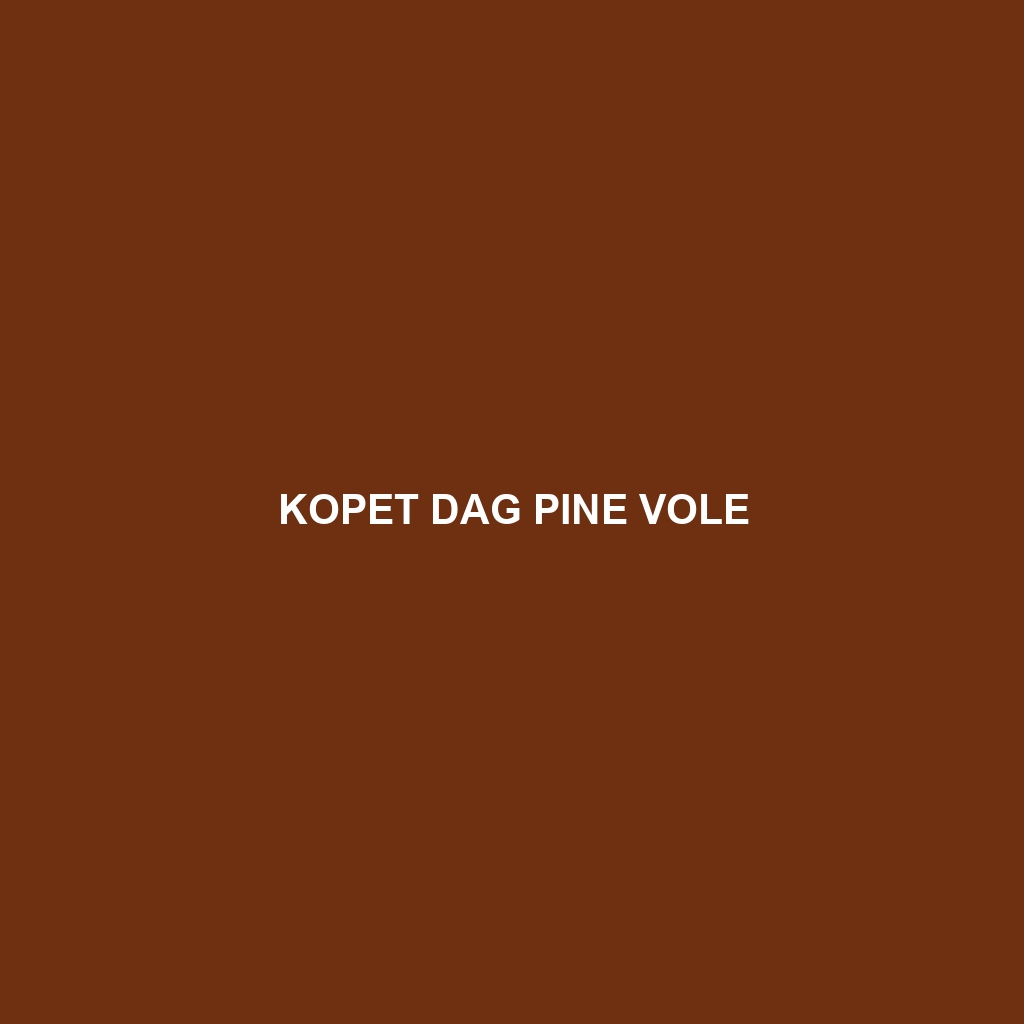Kopet Dag Pine Vole
Common Name: Kopet Dag Pine Vole
Scientific Name:
Habitat:
The Kopet Dag Pine Vole is primarily found in the mountainous regions of the Kopet Dag range, located along the border of Turkmenistan and Iran. This species thrives in forested areas rich in pine and other coniferous trees, often inhabiting grassy slopes and shrublands where they can find ample ground cover. Their preferred habitat consists of well-drained, sandy soils that provide suitable conditions for burrowing.
Physical Characteristics:
Kopet Dag Pine Voles are small, elusive rodents, typically measuring between 10 to 15 cm in length. They feature a dense, soft fur that ranges in color from light brown to greyish tones, providing excellent camouflage against their natural surroundings. They are characterized by a stocky body, short legs, and a small, rounded tail. Their large, prominent eyes and whiskers aid in nocturnal foraging, giving them an edge in their environment.
Behavior:
These voles are primarily nocturnal, exhibiting activity during the cooler hours of the night. They are known for their burrowing habits, creating extensive tunnel systems that serve as homes and protection from predators. Kopet Dag Pine Voles are also highly social animals, often residing in family groups that communicate through vocalizations and scent markings. Their territorial nature prompts them to defend their burrows vigorously, especially during mating seasons.
Diet:
The dietary habits of the Kopet Dag Pine Vole predominantly consist of roots, bulbs, and various plant materials. They are herbivores that forage on the foliage of grasses and wildflowers in their habitat. This species has adapted to relying on the nutrient-rich underground parts of plants, which they readily consume. Additionally, they may also indulge in seeds and fruits when available, making them vital for seed dispersal in their ecosystem.
Reproduction:
Kopet Dag Pine Voles typically breed during the warmer months, with peak breeding activity occurring from late spring to early autumn. Females are capable of producing multiple litters per year, with each litter containing approximately 2 to 6 young. The offspring are born blind and hairless but develop quickly, becoming independent after a few weeks. Parental care is offered primarily by the female, who nurses and protects the young until they are self-sufficient.
Conservation Status:
Currently, the Kopet Dag Pine Vole is classified as vulnerable due to habitat loss and fragmentation from agricultural practices and urban development. Conservation efforts are underway to protect this species and its natural habitat, emphasizing the need for sustainable practices in the region.
Interesting Facts:
One fascinating fact about the Kopet Dag Pine Vole is its ability to dig intricate burrow systems that can extend several meters below the surface. These structures not only serve as shelters but also play a crucial role in aerating the soil and facilitating seed growth, making the species an essential contributor to its environment.
Role in Ecosystem:
The Kopet Dag Pine Vole plays a vital role in its ecosystem as both a prey species for a variety of predators and as a herbivore that aids in seed dissemination. Their burrowing activities contribute significantly to soil health by improving aeration and fostering plant growth, thus maintaining the overall health of their forested habitat. By serving as a link in the food chain, they help sustain populations of larger animals that rely on them for sustenance, highlighting their importance in the ecological balance.
